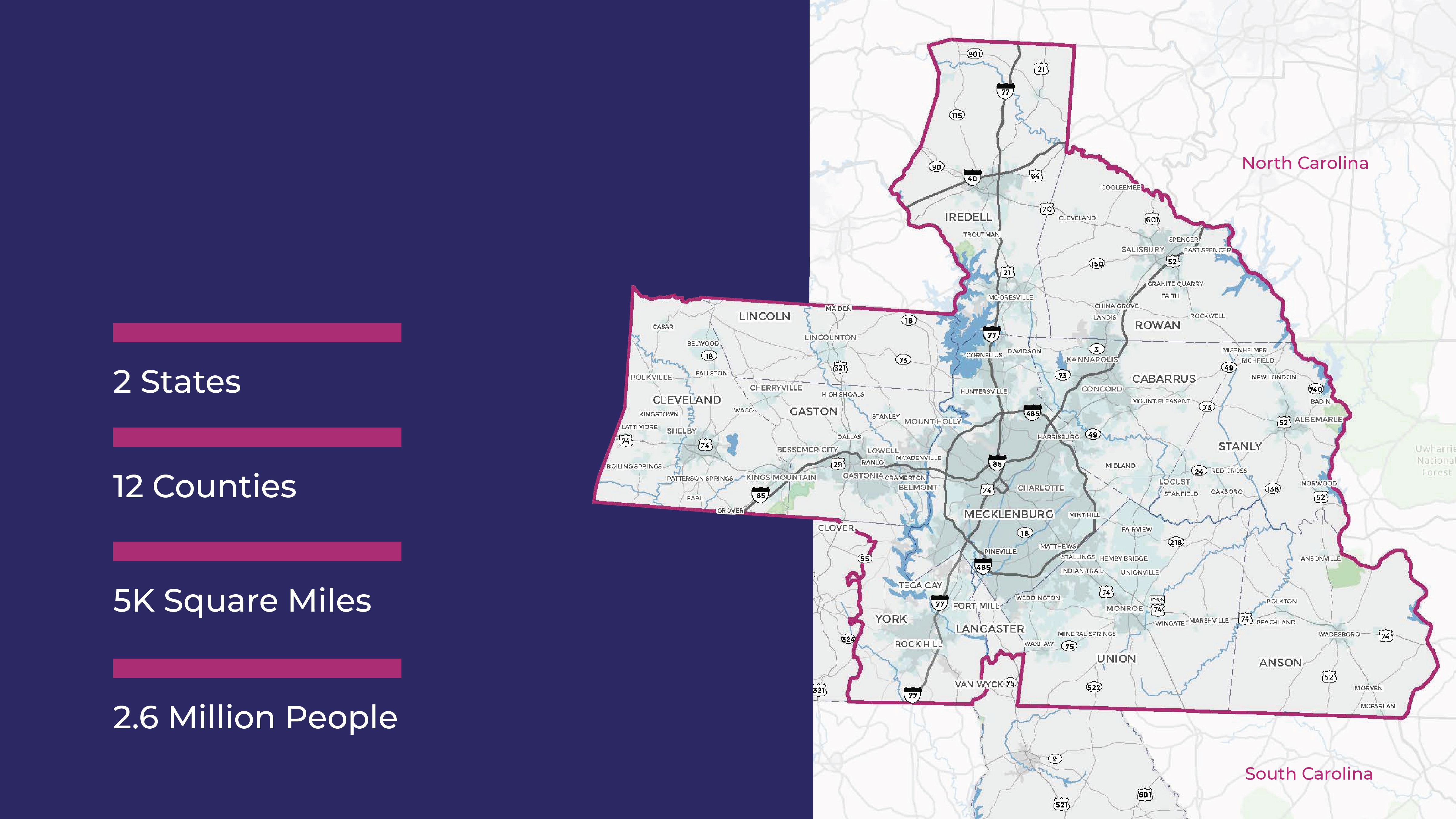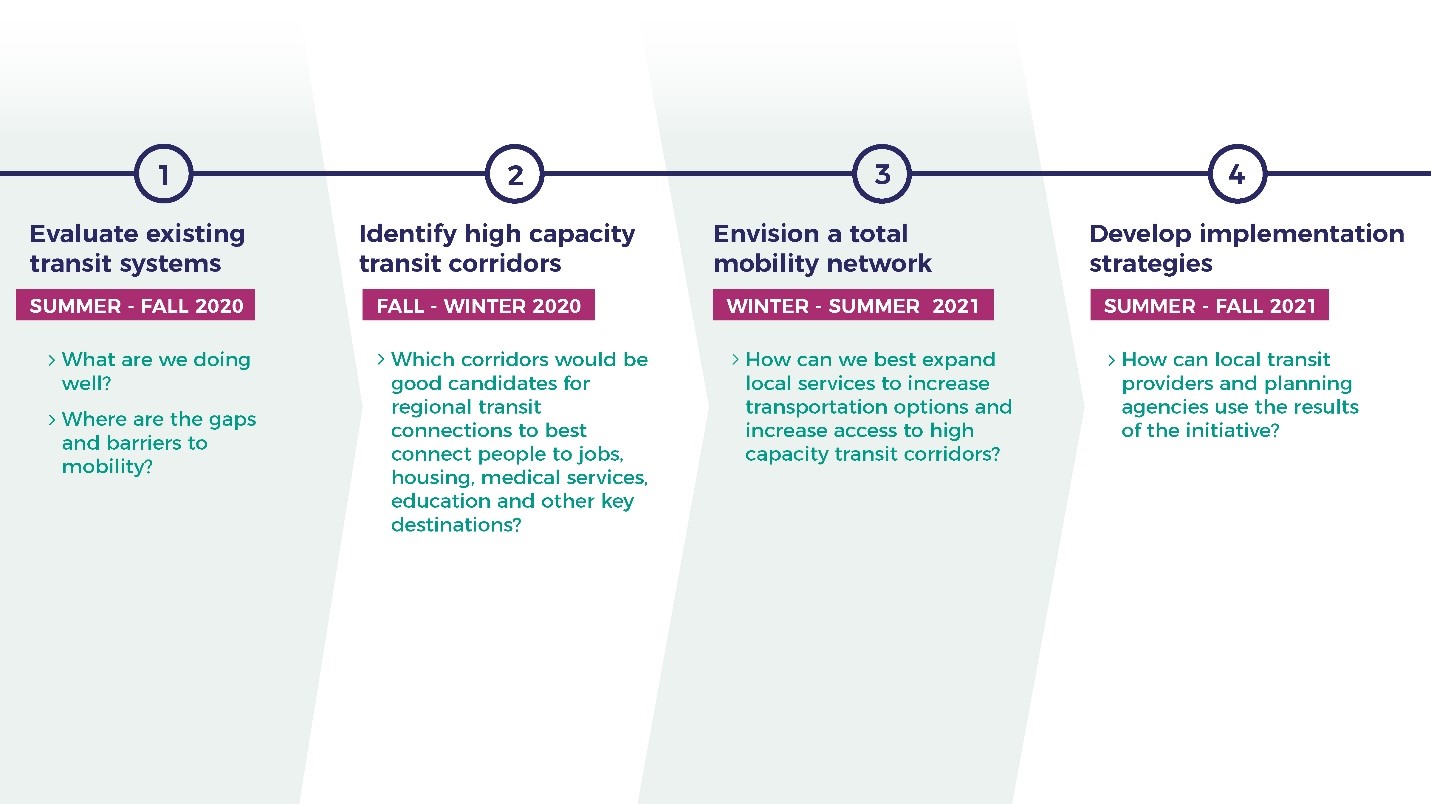Mobility, Equity, Public Health and the Future of Transit October 9, 2020
Jason Wager, CONNECT Beyond Project Manager
Over the last several months, our communities have been reeling from the impacts of the COVID-19 pandemic and trying to navigate how to return to a somewhat normal way of life. In tandem with this, the issue of racial inequity has taken a center stage in our public discourse. With communities of color accounting for a disproportionately higher impact of the pandemic and upward social mobility harder in our region than the rest of the nation, these two issues are intrinsically linked.

At the onset of CONNECT Beyond, the intent was to identify mobility options for the region. Options that allow workers to access new employment hubs, connect students to higher learning, ensure access to health providers, support independence for seniors, and allow all users to have various mobility options rather than relying on a single occupancy vehicle. The list goes on. The primary intent of CONNECT Beyond is still there, but we have to make a concerted effort to be sure that the analysis is meaningful for today as well as for the future.
Today, transit agencies in our region are meeting the immediate need of protecting the safety and wellbeing of transit riders and transit workers through increased cleaning measures and modified operations. Transit agencies have deployed various policies to help flatten the curve and provide mobility to all users, especially those who provide essential services that allow for everyone’s life to operate as normally as can be.
Our area transit agencies also continue adhering to long-standing commitments of providing mobility options for residents regardless of race, socioeconomic status, or disability. Area agencies continue to follow necessary reporting measures ensuring that everyone is treated equally, provide opportunities for public comment for major transit service changes, and incorporate demographic analyses into their planning. We applaud the work of regional transit providers for their dedication, commitment and follow through in keeping an array of mobility choices available.
For the future, our regional mobility initiative, CONNECT Beyond, must take into account the current reality of our communities and extend that vision 20-plus years into the future to ensure that as we grow, our transportation network is resilient and continues to serve as an underlying asset for all members of our community. Our charge – to create a regional transit vision that includes innovative transportation solutions to enhance mobility and access for people living in and visiting our region – does not change. This effort must think very intentionally about how we achieve this vision and how the values of our communities are evolving, especially over the last several months.
The residents of our region are reflecting on their core needs, transit agencies are thinking differently about how they deliver services, and governments are strategically reallocating resources to provide the most benefit. And we are all taking a hard, sometimes uncomfortable look at how we may have fallen short of addressing deep rooted concerns in our communities. If there was ever a time to be critiquing our own process, that time is now.
In addition to the unprecedented challenges we face today, however, we are at a unique cross-road of opportunity. CONNECT Beyond offers a once in a generation chance to re-imagine what role mobility will play in our region’s future and for us to evaluate how we choose transportation projects that support our values. Will the vision we develop today afford access to the abundance offered by our communities and, in turn, support a special quality of life that we will be able to proudly claim exists for everyone? We must use this opportunity to pivot to the future. Just as decisions of the past have shaped our current communities (think redlining of the 1930’s which was later exacerbated by expressway systems reinforcing racial segregation), we have the opportunity to shape how our communities evolve and come together.
Equity is a core element in the CONNECT Beyond mission but these conversations move us to be even more direct and measurable. This starts with asking the right questions:
- What voices need to be heard to ensure we are accounting for all facets impacted by public transportation?
- What strategies can we implement to directly combat the effects of past inequitable policies?
- How do we measure the advancement of equity?
- Have we done enough to ensure our strategies are community-driven?
- What data do we need to understand the impacts of COVID-19 on transit?
- What technologies and strategies can we implement to prepare us for the next pandemic?
We do not have all the answers and we know that the only way to address these and other questions necessitates bringing as many viewpoints to the table as possible. Over the next several months we will solicit significant input from regional stakeholders, the local community, the public and agencies through advisory committees, public surveys, focus groups, and other targeted engagement opportunities.

The process, which officially started in March 2020, will take place over 18 months. We intend to keep these key questions top of mind as we complete our technical work, which includes:
- Evaluating existing transit systems
- Making recommendations for potential rapid transit lines
- Analyzing opportunities for commuter rail operation
- Strategizing ways to better coordinate regional bus services
- Developing a transportation demand management plan for our region
- Documenting transit-oriented development strategies
- Considering ways to improve connections between urban and rural transit services
We need your help and support to make this regional mobility vision happen for everyone. We invite you to stay connected with us on this journey.
